Crafting an Effective Marketing Automation Strategies in 2026
Imagine a world where your marketing efforts are streamlined, personalized, and efficient. This is the world of programmable marketing automation.
In the fast-paced digital landscape, a great marketing automation strategy has become a crucial tool for any marketing department to connect with potential customers in meaningful ways, at scale.
Let’s explore how to craft a successful programmable automation strategy that drives results and boosts customer engagement.
Short Summary
-
Marketing automation is a technology that helps businesses increase efficiency and convert more leads into customers.
-
Carefully evaluate features when selecting software, such as ease of use, scalability, integration capabilities, and robust analytics tools.
-
Developing an effective strategy requires setting goals & objectives, identifying target audience, mapping buyer journey, creating personalized content, implementing automated workflows & monitoring/optimizing campaigns for best results.
Understanding Marketing Automation
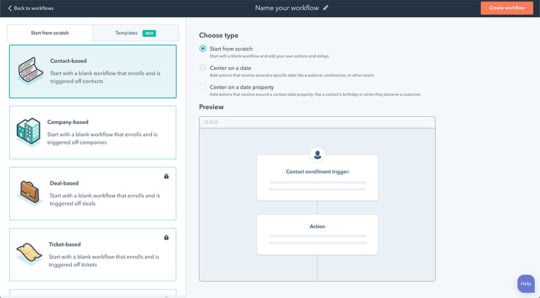
Automation of repetitive marketing tasks is the use of software and technology to automate recurring marketing tasks, freeing up time and resources for more strategic endeavors.
Through leveraging workflow right marketing automation tools now, businesses can focus on the bigger picture, refining their marketing strategies, to better engage and retain customers. With the support of a marketing team, the use of programmable automation suite becomes even more effective.
programmable workflow automation is a technology that automates recurring marketing tasks, making lead nurturing automation work efficiently for businesses. It can help increase efficiency and convert more of their leads into paying customers.
What is Marketing Automation?
Marketing automation work to the use of software to automate repetitive tactical marketing tasks, such as email campaigns, social media posting, and ad management.
This innovative technology allows businesses to save time and resources by streamlining marketing processes, allowing marketing teams to focus on more meaningful activities and create a better customer experience.
B2C marketing workflow automation solutions, for example, can help businesses optimize their email and ad campaigns, reducing the manual effort required to manage these channels.
Automation isn’t just for big corporations, either. Small businesses and startups can also benefit from a well-crafted and automated email marketing strategy.
By automating tasks like the lead management, nurturing, customer onboarding, and re-engagement, businesses can ensure they’re engaging potential customers effectively and efficiently at every stage of the buyer’s journey.
Benefits of Marketing Automation
The benefits of the right workflow automation software are numerous, including:
-
Increased lead generation
-
Higher conversion rates
-
Better customer engagement
-
More efficient use of marketing resources
By automating recurring marketing tasks, businesses can focus on delivering personalized content to their customers, leading to improved customer loyalty and customer retention too.
Nurturing leads is a particularly important aspect of B2B programmable workflow automation, as it provides prospects with valuable information about a company’s products and services.
When utilizing top marketing automation strategies, businesses can optimize task automation and avoid potential customer experience impediments, resulting in a more engaged and satisfied customer base.
Choosing the Best Marketing Automation Software
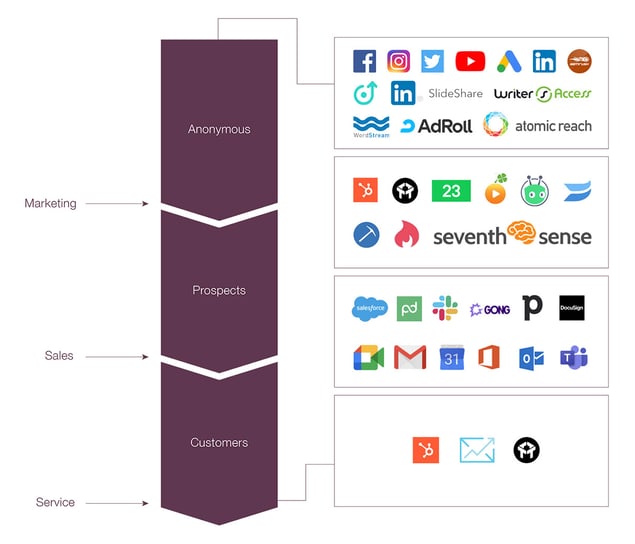
Selecting the right marketing automation platform and software is crucial for success, as the effectiveness of your programmable marketing automation lets and strategy largely depends on the platform you choose. With so many options available, it can be overwhelming to decide which software best aligns with your business goals, budget, and specific needs.
To help you make an informed decision, let’s dive into the key features to look for in workflow automation software and compare some of the most popular platforms on the market.
Key Marketing Automation Tools Features to Look For
When evaluating marketing automation software, it’s essential to consider the following features:
A user-friendly interface and intuitive design are key components of a right programmable automation software solution that ensures ease of use, while scalability ensures the software can handle large volumes of data and grow with your business.
Integration capabilities are another crucial factor to consider, as seamless integration between your marketing automation platforms, softwares and other tools in your marketing stack can greatly enhance the efficiency and effectiveness of your marketing channel performance.
Finally, robust analytics and reporting tools can help you measure the lead generation success of your marketing campaigns and make data-driven decisions to improve your workflow automation strategy.
Comparing Popular Marketing Automation Platforms
Several popular social media marketing and automation platforms include:
-
HubSpot
-
Mailchimp
-
SendinBlue
-
Pardot
Each platform offers different features and pricing structures to cater to various business needs. For example, Mailchimp is known for its cost-effective and user-friendly platform, ideal for small businesses looking to create, implement, and analyze email and ad campaigns.
On the other hand, HubSpot offers a comprehensive, robust marketing automation suite aimed at managing inbound marketing and sales.
Pardot, a Salesforce Marketing Cloud Account Engagement platform, is another popular option, especially for larger organizations with more complex needs.
By comparing the features and pricing structures of these platforms, businesses can identify the marketing automation software that best aligns with their goals and requirements.
Developing a Marketing Automation Strategy
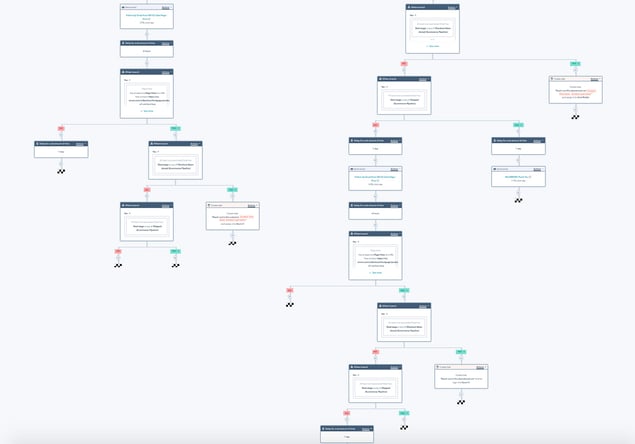
Developing a profitable marketing automation strategy involves several crucial steps.
-
Setting clear goals and objectives
-
Identifying your target audience
-
Mapping the buyer's journey
-
Creating personalized content to engage customers at each stage of their journey
By following these steps and understanding how marketing works, businesses can improve their marketing efforts and achieve better results.
Let’s explore each of these steps in more detail to help you craft an effective marketing channel automation strategies for your business.
Define Goals and Objectives
Defining clear goals and objectives is an essential first step in developing a successful playbook for scaling your programmable automation efforts.
By setting measurable objectives that align with your overall business goals, you can ensure your programmable automation strategic approach is niche-focused and effective.
Some common goals and objectives for marketing automation planning include:
-
Growing the number of marketing qualified leads
-
Increasing brand awareness
-
Converting more free trial users to paid customers
-
Reactivating lapsed customers
-
Reducing time spent on email list segmentation
Identifying your specific goals and objectives will help you determine the best tactics and tools to use in your marketing automation effectiveness.
Identify Target Audience
Identifying your target demographic is a crucial component of a successful email automation strategy. This involves conducting market research, analyzing customer data, and segmenting your audience based on factors such as demographics, psychographics, and behavior.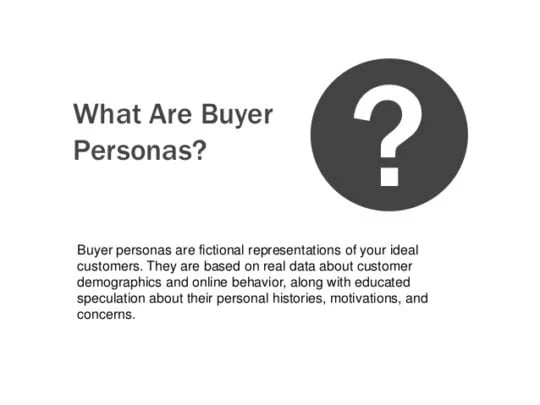
Understanding how does marketing to your target audience is essential for:
-
Defining appropriate objectives
-
Creating persuasive messages that guide customers through the sales funnel
-
Anticipating customer behavior
-
Designing more effective automation workflows.
Map Customer Journey
Mapping the customer's journey is an important step in the buyer's journey and creating a workflow automation strategy, as it helps identify key touch points and opportunities for how marketing automation works to enhance customer engagement and loyalty.
The buyer's journey encompasses the entire path a customer takes from discovering your brand to becoming a loyal customer, including stages such as:
When your team properly understands each stage of how does marketing automation affect the entire buyer's journey well, you can identify opportunities to implement email automation work-flows that streamline the process and improve the overall customer experience.
Create Personalized Content
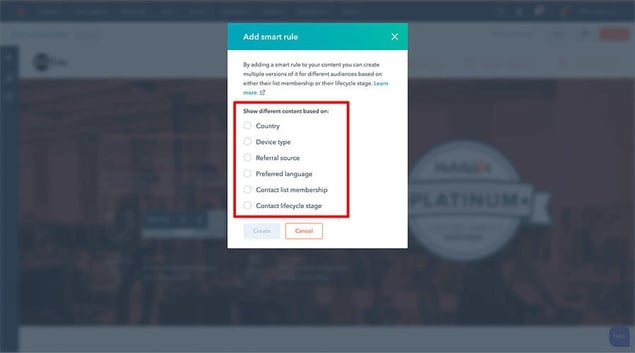
Creating personalized content is a vital aspect of a successful programmable automation playbook. By segmenting your audience and delivering targeted email messages and key metrics at each stage of the entire customer journey, you can improve the relevance and engagement of your marketing campaigns.
Utilizing customer data to inform content personalization is key, allowing you to tailor your messaging and offer unique experiences for each customer and audience segmentation has.
When your team delivers personalized and relevant content, you can build trust with your audience and nurture leads more effectively throughout the sales process.
Implementing and Optimizing Marketing Automation Workflows
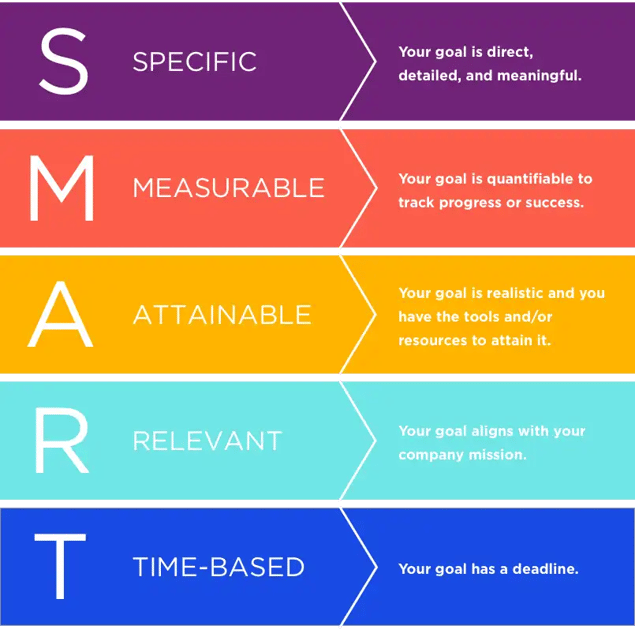
Once you have a solid workflow automation playbook in place, it’s time to implement and optimize your marketing automation workflows.
The approach involves setting up automated processes for various sales and marketing teams and department tasks and continuously monitoring and adjusting campaigns for maximum effectiveness.
Let’s explore how to set up automated workflows and the best practices for monitoring and optimizing your marketing automation campaigns.
Set Up Automated Workflows
Setting up automated workflows is a key component of implementing a successful marketing automation framework. By automating repetitive tasks, such as:
-
Lead nurturing
-
Customer onboarding
-
Upselling
-
Re-engagement
You can ensure timely and targeted communication with customers.
To set up automated workflows, follow these steps:
-
Identify repetitive processes in your marketing efforts.
-
Design workflows that streamline these tasks.
-
For example, you might create a workflow that sends automated emails to new leads, guiding them through the onboarding process and nurturing them towards a purchase decision.
Monitor and Optimize Campaigns
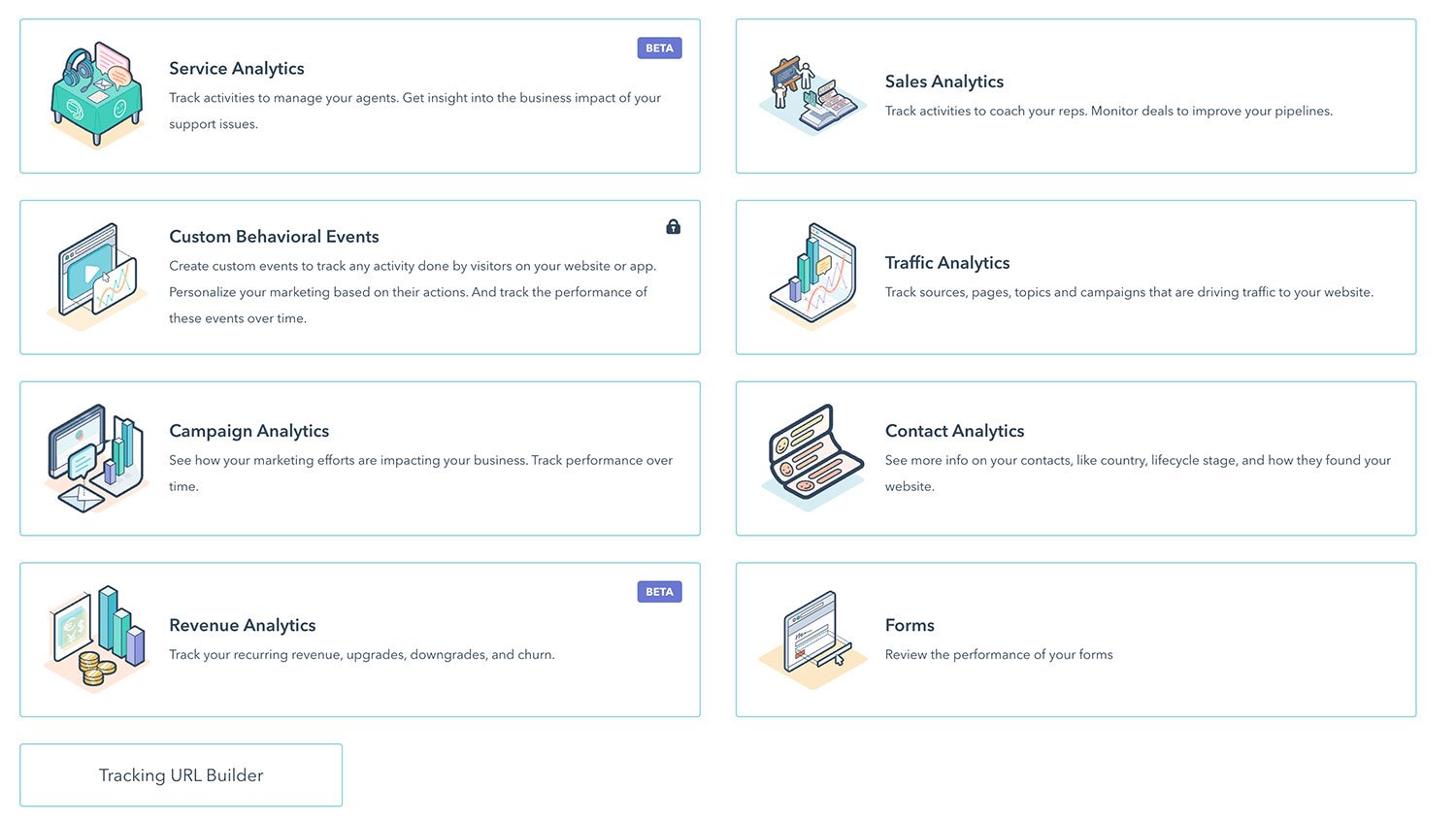
Monitoring and optimizing your marketing automation campaigns is essential for achieving the best possible results.
Monitoring at this level involves analyzing performance data, conducting A/B testing, and making necessary adjustments to improve your campaigns and achieve your marketing goals.
Use analytics and reporting tools to track key performance indicators (KPIs) and assess the effectiveness of your campaigns. Based on this data, refine your messaging, targeting, and timing to improve campaign performance and better engage with your audience.
Overcoming Marketing Automation Challenges in 2026
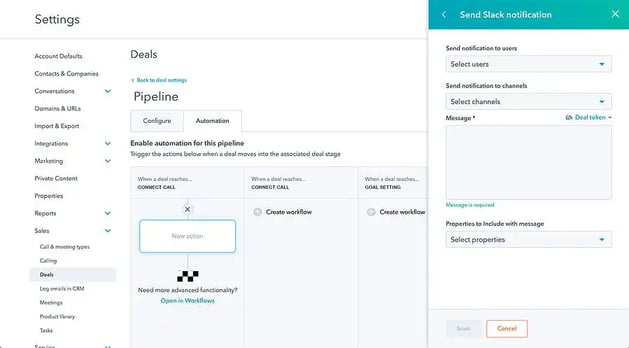
While the right marketing automation software offers numerous benefits, it also presents some challenges. Addressing issues such as data quality, software integration, and striking the right balance between automation and personalization is crucial for increasing your click through rates in order to refine your companies lead conversion optimization.
Let’s discuss how to overcome these email marketing automation challenges and ensure the success of your email automation strategy.
Data Quality and Integration
Ensuring data quality is essential for the success of programmable automation strategies, as the data you use must be current, organized, and accurate. To guarantee data quality, invest in tools and processes that help maintain clean and up-to-date customer data.
Seamless integration between your prospect nurturing automation software and other tools in your marketing stack is also crucial for maximizing the effectiveness of your marketing activities.
Choose the best marketing automation platform and software platforms that offer robust integration capabilities and ensure compatibility with your existing marketing tools too.
Balancing Automation and Personalization
Striking the right balance between automation and personalization is a challenging yet vital aspect of a successful workflow automation and automated marketing playbook. While automation can streamline processes and save time, maintaining a human touch in customer interactions with marketing email automation helps to build trust and loyalty.
To achieve the optimal balance, use automation to handle manual and repetitive tasks, while preserving the human touch in customer service and personalized customer communications too. By blending automation with personalization, you can create a more engaging and satisfying customer experience.
Case Study: Successful Marketing Automation Strategy in Action
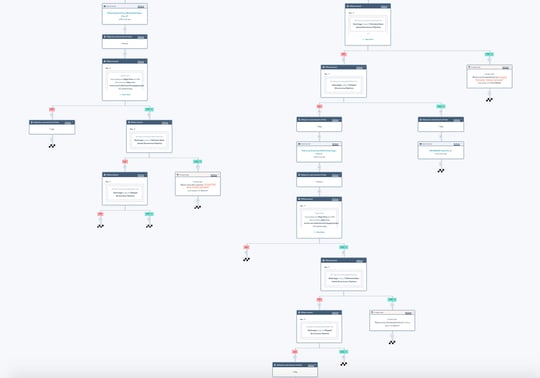
To illustrate the power of a well-executed marketing automation technology and of marketing channels, let’s take a look at a case study involving a small business that successfully implemented best workflow and best marketing automation solution, to drive revenue growth, sales and customer engagement. The business in question.
-
Set clear goals and objectives
-
Identified their target audiences
-
Mapped the customer journey
-
Created personalized content for each segment
By automating tasks such as their lead generation, lead management,, nurturing, customer onboarding, and re-engagement, the company was able to streamline their marketing processes and significantly improve their campaign performance.
As a result, they experienced increased lead generation, higher conversion rates, and stronger customer loyalty.
Marketing Automation Strategy Takeaways
In today’s fast-paced digital landscape, any popular marketing automation tool is essential for businesses looking to streamline their marketing and sales processes, and improve customer engagement.
By setting clear goals and objectives for effective marketing automation team, identifying the target audience, mapping the customer journey, and creating personalized content, businesses can craft an effective automation of marketing emails that drives results.
Remember, the key to success lies in choosing the the right email marketing automation tool-kit and software, balancing automation and personalization, and continuously monitoring and optimizing your campaigns. With the right tools and strategies in place, you can unlock the full potential of B2B marketing automation, and propel your business to new heights.
Common Marketing Automation Strategy Questions
What is a marketing automation strategy?
A workflow automation strategy is the use of software to manage and streamline repetitive marketing activities such as email campaigns, content distribution, prospect nurturing, customer segmentation and more. It enables businesses to create automated workflows that allow for faster, more targeted marketing activities to be directed toward potential leads and customers.
What are the automation strategies?
Automation strategies involve creating an efficient and streamlined approach to a company’s operations by automating certain processes. These strategies can range from Robotic Process Automation (RPA) to Business Process Automation (BPA).
The goal is to improve efficiency and productivity, while reducing costs.
How do you develop a marketing automation strategy?
Developing a successful marketing automation strategy involves following 6 key steps: defining your goals, understanding your customers, mapping out the customer journey ways sales nurturing ways marketing automation, analyzing workflow automation engagement analytics, tailoring the automated marketing strategy to serve customers, and providing a multi-channel experience.
Defining your goals is the first step in creating a successful email marketing strategies. It is important to understand what you want to achieve with your marketing strategy and how it will help your business across your buyer's journey.
What is marketing automation examples?
Prospect nurturing automation examples include sending out automated emails based on triggers, such as purchases or program updates. Additionally, creating dynamic content and segmented campaigns can also be automated to deliver personalized messages to customers.
Finally, surveys, reviews, social media management and feedback emails allow businesses to gather customer insights for a better experience for your customer.
What is marketing automation?
Marketing automation helps provide the capacity to streamline, automate, and measure click through rates, from nurturing workflows to landing pages, allowing companies to scale their digital marketing campaigns quickly and efficiently.
